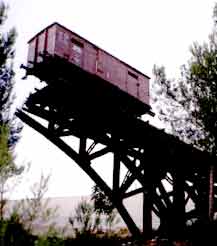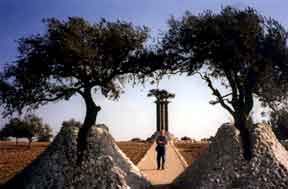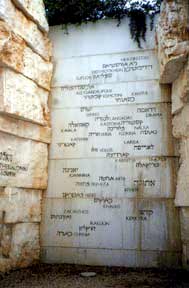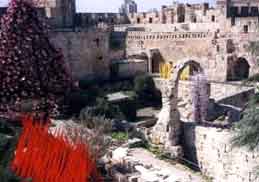

By
Don and Linda Freedman
Search
TheTravelzine
TheTravelzine Group
Access Your Mail
Don's
Gallery
Packing
Hints
Planning
Tips
Cities
Links
Links
LINKS TO OUR TRAVELOGUES
Argentina, Buenos Aires - Jan-Mar 2010
Argentina, Buenos Aires - Jan-Mar 2009
Argentina, Buenos Aires - Jan-Mar 2008
Austria - Fall 2005
Belgium, Brussels - Fall 2000
Canada - Summer 2002
Canada - Summer 2001
Canada - Summer 2000
Czech Republic - Spring 2000
France - Fall 2002
France, Paris - Fall 2000
France, Paris - Spring 1999
France, Lyon - Spring 1999
Germany, Berlin - Fall 2009
Germany - Fall 2002
Germany - Spring 2000
Germany - Fall 1999
Greece - Fall 2012
Greece - Fall 1999
Greece - Fall 1997
Hungary - Spring 2000
Israel - Fall 1999
Italy - Winter 2007
Italy - Winter 2006
Italy - Winter 2005
Italy - Winter 2004
Italy - Winter 2003
Italy - Winter 2001
Italy - Fall 1998
Italy - Fall 1996
Netherlands - Spring 2000
Portugal, Azores - 2019
Portugal, Azores - 2018
Portugal, Sao Miguel & Lisbon - 2017
Portugal, Azores - 2017
Portugal, Azores - 2016
Portugal, Azores - 2015
Portugal, Azores - 2014
Portugal, Azores - 2013
Portugal, Azores - 2012
Portugal, Azores - 2011
Portugal, Lisbon - 2011
Portugal - Fall 2006
Portugal - Fall 2004
Portugal - Fall 2003
Portugal - Fall 2001
Portugal - Spring 1999
Portugal - Spring 1997
Slovakia - Spring 2000
Slovenia - Spring 1999
Slovenia - Fall 1996
Spain, Barcelona - Winter 2006
Switzerland - Fall 2002
Switzerland - Spring 2000
Switzerland - Spring 1999
Switzerland - Fall 1998
Switzerland - Fall 1997
Switzerland - Spring 1996
U.S. Florida, Key West - Fall 2006
U.S. Florida - Spring 2001
U.S. Maine - Summer 2002
U.S. Massachusetts - Summer 2003
U.S. Massachusetts - Summer 2002
U.S. Massachusetts - Summer 2001
U.S. New York State - Fall 2005
U.S. New York State - Summer 2004
U.S. New York State - Summer 2003
U.S. New York State - Summer 2001
U.S. Washington,DC - Spring 2000
ISRAEL Fall 1999
Jerusalem
The day had been very warm and humid. Driving from Tel-Aviv, as we ascended to Jerusalem the air became cleaner, fresher and crisper. The surrounding mountains were alive with construction matching Tel-Aviv crane for crane.
The Eldan Hotel, 24 King David Street, is brand new and perfectly located. Across the street from the very famous King David Hotel, it is within easy walking distance of the old city, the city center and the pedestrian mall. Eldan is a well-known car rental agency and this is their first venture into hotels. If this is any indication, they should enjoy rapid growth.
The large lobby opens to a nice patio at the main entrance. The adjacent Well Done Dairy Restaurant is where the sumptuous breakfast buffet is served. There are 76 good size guestrooms, all with baths and nice amenities. The corridors are spacious and well appointed. The front desk staff is young, cheerful and very helpful. It all adds up to an excellent three-star value.
Coincidentally, a friend and the hotel recommended the same place for dinner. Just up King David Street, across from the Hilton, Minaret is a Lebanese restaurant with appropriate decor and environment. The service is best described as loose and convivial, which makes the total experience relaxing and fun.
After we made a small dent in the generous servings of twelve appetizers that appeared in rapid succession, they offered us refills. Delicious as the hummus, tahina, eggplant, tabouli, falafel, fried eggplant and cauliflower, etc. were, we knew enough to leave room for the soon to be presented mixed grill. Chunks of lamb, beef, chicken and ground beef were skewered along with tomato and onion wedges and heaped on a large platter alongside an exceptional rice salad. Everything was tasty and well prepared the portions very generous and the prices extremely reasonable. They torture you by leaving a platter of gorgeous baklava on your table but we settled for refreshing, fresh mint tea.
Israeli wineries have come a long way. No longer the land of just the sweet, red, ceremonial varieties, we had wonderful dry, fruity red house wines which would be tough competition for many wines at twice the price. And another surprise was the quite good Israeli beer.
 More than
any city in the world, Jerusalem has a different meaning
to every visitor; no matter the meaning, it holds a
special place in your heart and soul. Nowhere is this
more evident than when you pass through one of the
historic gates of the vast walls into the old city. In
1982, as we wandered through the various quarters -
Christian, Muslim, Jewish and Armenian - and visited the
respective religious shrines, we were overwhelmed by the
richness of the historical heritage we were viewing. Now,
as we approach the new millennium, our emotions ran high
with hope that peaceful solutions to the conflicts and
contradictions are just around the corner.
More than
any city in the world, Jerusalem has a different meaning
to every visitor; no matter the meaning, it holds a
special place in your heart and soul. Nowhere is this
more evident than when you pass through one of the
historic gates of the vast walls into the old city. In
1982, as we wandered through the various quarters -
Christian, Muslim, Jewish and Armenian - and visited the
respective religious shrines, we were overwhelmed by the
richness of the historical heritage we were viewing. Now,
as we approach the new millennium, our emotions ran high
with hope that peaceful solutions to the conflicts and
contradictions are just around the corner.
Today we had the incredible experience of walking through the Western Wall Tunnels. Approaching the ancient wall, surrounded by hundreds of people praying, standing in silence and touching the stones, we felt a deep awareness and pride in our Jewish heritage. In 1967, a project was undertaken to expose the full extent of the concealed wall to make this ancient heritage visible and tangible to the Jewish people. Magnificent buried structures, which comprised a continuous chain wrought in stone stretching from the Hasmonean era until our time, were exposed for the first time.
The excavations revealed the entire 488-meter length of the Western Wall. Rooms and public rooms were unearthed, a section of a Second Temple road, a Hasmonean water tunnel, a pool and much more. We entered the "secret passage", which was an entrance to a vaulted passage built as a substructure to support the extension of the Street of the Chain above. At the Second Temple period stairway, there's a sound and light show. At the large hall, which is a subterranean structure consisting of four interlocking vaults, there is a computerized model of the Herodian Second Temple, brilliantly done. You can see structural changes effected over generations.
Warren's Gate is one of the four entrance gates from the Western Wall to the Temple Mount from the Second Temple period. Opposite the Foundation Stone, is the traditional site from which the world was created, which is the site of the Holy of Holies. A long tunnel exposes a section of the entire length of the Western Wall. The tunnel passes through medieval structures adjoining the wall, which structures were built in order to support the row of Muslim buildings, which form the western facade of the Temple Mount Plaza above.
The Hasmonean Water Tunnel brought water to the Temple Mount area. The tunnel ascends and winds. Herod had built the Antonia Fortress in the north of the Temple Mount. A portion of the moat protecting the fortress was quarried to form a pool at the end of the water tunnel. This pool continues beyond the wall in the north in the Sisters of Zion Convent. In the southwestern corner of the pool is a staircase from the Roman period, which ascends to Bab Al-Ghawanimah Street and from there to Lion's Gate Road. A tunnel is dug in the mount in the southeastern corner of the pool that exits onto Lion's Gate Road. Today, no visit to the old city of Jerusalem is complete without a tour of the Western Wall Tunnels.
 Exiting the Zion Gate and up to
Mount Zion, we visited King David's tomb. Until the Six-Day
War, the roof of the building housing the tomb was used
as a lookout over the Jewish Quarter. On the other side
of the building, steps lead to the room of Jesus' Last
Supper.
Exiting the Zion Gate and up to
Mount Zion, we visited King David's tomb. Until the Six-Day
War, the roof of the building housing the tomb was used
as a lookout over the Jewish Quarter. On the other side
of the building, steps lead to the room of Jesus' Last
Supper.
South of the city at Ramat
Rahel is the Park of Olives built to demonstrate the
disconnection between the urban environment and the land.
In the center of the park is a monument of three tall
columns perched on steps at the top of which are planted
olive trees, olives being a symbol of peace. Wide paths
form a diamond around the centerpiece with cross paths
leading to the monument. Olive trees are planted between
the paths. This is living artwork that tells a story.
From here, on a clear day there are great views of
Bethlehem, the surrounding Palestinian villages and the
Dead Sea.![]()
A masterpiece of contemporary architecture is the
interior of the Supreme Court Building. The design is
brilliant in its simplicity and use of open space and
light. Here the always-beautiful Jerusalem stone is
finished with expert craftsmanship and integrated
perfectly into the structure. We were fortunate to be
able to enter one of the courtrooms, where we caught the
tail end of a hearing on a petition pertaining to the
naming of street in Haifa. The fact that three other
streets already have the same name is why the issue was
in court. The three justices took the case under
advisement and the day ended with the judges and lawyers
enjoying a great laugh over this weighty problem.
There is a beautiful, peaceful cloister between two sections of the building and an outdoor passageway connects to the Knesset.

 There are two new remembrances at
Yad Vashem since our last visit, the Children's Memorial
and the Valley of the Destroyed Communities. The purpose
of Yad Vashem is to ensure that the Holocaust will never
be forgotten so that it will never happen again. These
powerful memorials deliver a poignant message to that end
and should not be missed.
There are two new remembrances at
Yad Vashem since our last visit, the Children's Memorial
and the Valley of the Destroyed Communities. The purpose
of Yad Vashem is to ensure that the Holocaust will never
be forgotten so that it will never happen again. These
powerful memorials deliver a poignant message to that end
and should not be missed.
When we told our good friend and member of TheTravelzine, Giorgio Lazar (owner of the Hotel delle Muse in Rome), that we were going to Israel, he put us in touch with his brother and sister-in-law, Beniamino and Angela, who live in Jerusalem. Beniamino picked us up and took us to his home, where we met his delightful wife and children and enjoyed a wonderful dinner prepared by Angela. Warmth and hospitality are in the Lazar family genes - no doubt about it.
Right after breakfast, we headed for the old city through the Jaffa Gate and around the corner to the Tower of David Museum of the history of Jerusalem. How lucky we were to not only enjoy the state-of-the-art museum set in the superbly restored ancient Citadel with breathtaking views of the city from its towers, but to also witness the incredible genius of one of the greatest glass artists of the twentieth century, Dale Chihuly.
We started our tour with
the 14 minute animated tour that tells the story of
Jerusalem in a lighthearted way. The museum is organized
by historical periods, facilitating comprehension. The
museum is built into the walls and towers around the
Citadel and in the middle is a lush archeological garden.
The exquisite glass exhibition was presented in and
around the garden. From the intricate, enormous (as high
as 13.5 meters) pieces to smaller decorative sculptures,
the shapes and colors in the bright sunlight were
dazzling to behold.  There was a room with some
unimaginably beautiful treasures on display as well as a
video of Chihuly and some of his team demonstrating how
his creative ideas are brought to fruition through the
use of complex glass blowing techniques.
There was a room with some
unimaginably beautiful treasures on display as well as a
video of Chihuly and some of his team demonstrating how
his creative ideas are brought to fruition through the
use of complex glass blowing techniques.
The Cafe Imperial Internet cafe is located up one flight in the Hotel Imperial a few streets from the Jaffa Gate. There we found old-city, Muslim charm with a nice staff and a fast connection at a fair price.
After getting caught up in the cyber world, we walked to the pedestrian shopping area of the Yosef Rivlin, Yoel Salomon and Ben Yehuda Malls. There are lots of places to eat and drink and a few nice shops. But most of the shops were for tourists, some of the discount variety and some low end. On the whole, it was a bit tacky.
Continuing up Agrippas, we came to Mahane Yehuda Market. It was late in the afternoon and this huge indoor, outdoor market area was throbbing with activity. Here we saw and heard it all; the ultra conservatives, the new immigrants, the secular, Hebrew, Russian, English and languages we could not identify, folk music with vendors linking arms and dancing wildly in the streets. The common bond was food and merriment.
There are some nice-looking restaurants along Agrippas near and past the market area that will be for another time. Walking back along the busy Yafo Street, the shopping frenzy continued in the multitude of shops along the way.
Before going to have a bite, we stopped to look at the YMCA, across the street from our hotel. This famous landmark was built by the British (who founded the YMCA) and designed by the architect who did the Empire State Building, Arthur Lumassy Herman, who combined elements of the three great religions in its design. It's hard to believe it's a YMCA. An alternative to a hotel, the rooms are reported to be quite decent and reasonably priced as is the food in the ground floor cafeteria. There's a large theater where free concerts are frequently performed.
A few blocks south of the hotel are several contemporary restaurants. We chose Cafe Restaurant Paradiso, 36 Kerem Hayesod Street. It's a smart-looking spot with a light menu of sandwiches, appetizers, a few entrees and desserts. Linda had a smoked salmon, scrambled egg and cream cheese sandwich. My sandwich was of entrecote, roast peppers, arugula and tomato. The portions were humungous - each sandwich order consisted of two large sandwiches. The quality was very good and the service friendly and excellent. I enjoyed a very nice Israeli Cabernet.
We had purposely arranged
to be in Jerusalem mid-week because it pretty well shuts
down for the Sabbath. So on Friday morning, we got on the
09:45 bus back to Tel-Aviv (17.80 NIS per person). The
bus was packed with soldiers and students heading home
for the weekend.![]()
![]() to
Tel-Aviv (2) and Haifa,
Akko and the north
to
Tel-Aviv (2) and Haifa,
Akko and the north
![]() to Tel-Aviv
(1)
to Tel-Aviv
(1)
Search TheTravelzine | TheTravelzine Group | Don's Gallery
Packing Hints | Planning
Tips | Cities
Links
All pages on TheTravelzine.comęCopyright 1996-2020 Don & Linda Freedman